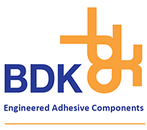Surface preparation is one of the most important aspects when it comes to adhesive efficiency. No matter how strong your adhesive is or how compatible it is to your chosen material, the bonding surface must be dirt-free and dry.
Usually, applying a 50:50 mixture of Isopropyl Alcohol (IPA) and water will sufficiently clean the surface as the IPA will break through light grease and the water will remove dirt and dust. Once applied, you should dry thoroughly and avoid touching it as it may get re-contaminated.
Situations where additional preparation is required
On some occasions, there are some situations which require additional surface preparation:
Heavy Oils
On top of the IPA and water solution, a degreaser or solvent-based cleaner should be applied to remove heavy oil or grease.
Abrasion
By using scrub pads, steel wool or sandpaper, you can loosen any accumulated dirt or chipped paint from painted surfaces or plastic items; make sure you follow a circular motion in order to result in a strong bond. Still clean with IPA and water mixture to remove all the loose particles.
Adhesion Promoters
After applying the IPA and water solution, a primer can be added to plastics and paints which will improve adhesion by blocking any elements that may migrate out over time and erode the bond.
Porous Surfaces
Porous materials, like wood and concrete, ideally need to be sealed, either with a primer, paint or varnish, in order to provide a unified surface for the adhesive to be applied to.
Unique Materials
So the adhesive isn’t compromised, some unique materials need to be applied with a sealant beforehand:
- Copper and copper-containing alloys need to be coated with a lacquer or varnish to avoid oxidation and rust forming underneath the adhesive.
- Some rubber materials benefit from priming to stop adhesive degradation, and flexible vinyl requires either a sealant to prevent the plasticiser from migrating, or an adhesive which has been specifically formulated to cope with plasticisers.
The number of Low Surface Energy (LSE) plastics and composites that are being used in assemblies is increasing rapidly; these include materials such as polypropylenes, TPO, silicone coated plastics etc. The problem you experience with LSE’s is that they resist the applied adhesive so it fails to perform its job.
Luckily, a wide range of tapes and adhesives for hard-to-bond surfaces are stocked by BDK – ask us about our range today.
